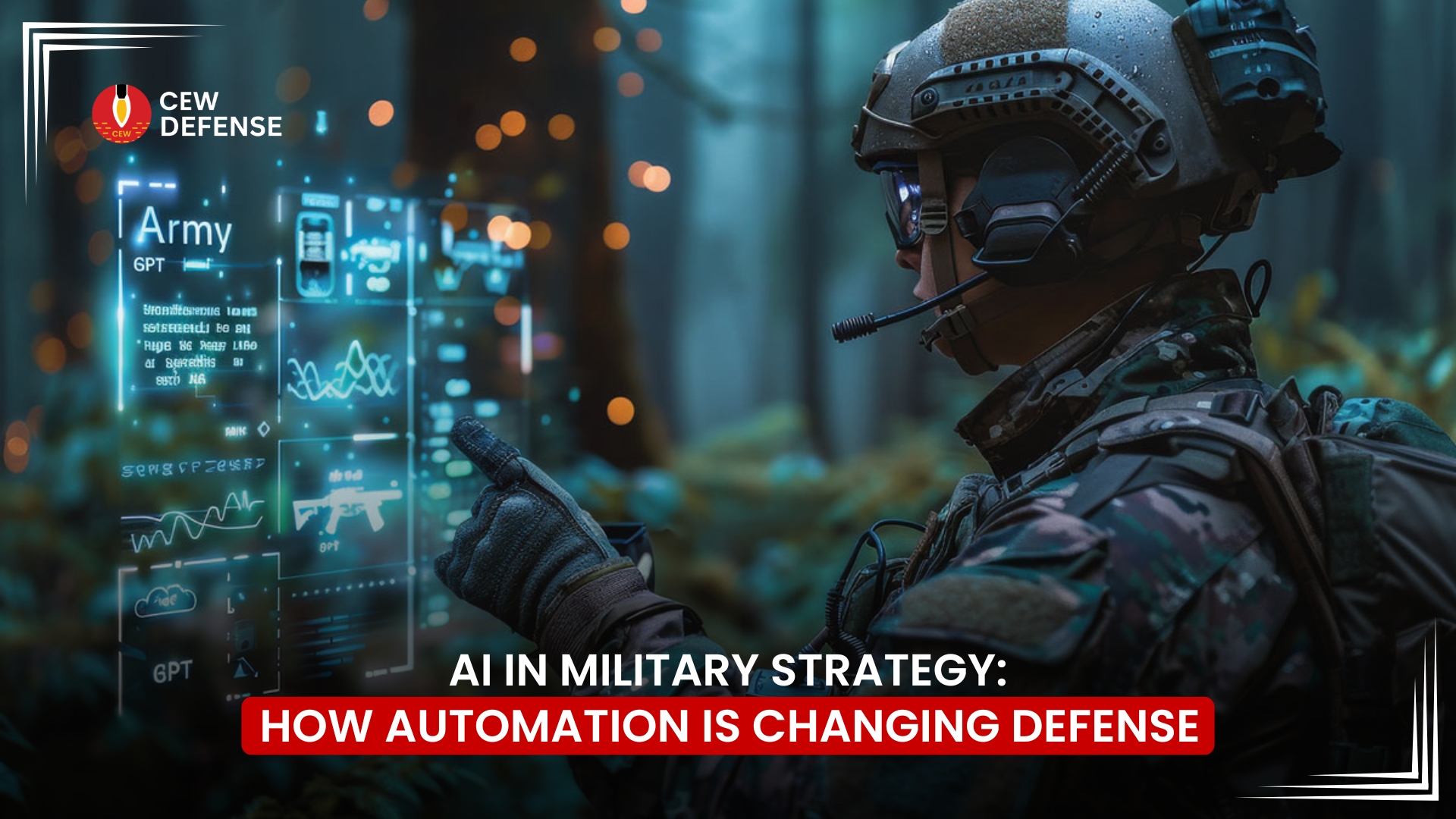Artificial Intelligence (AI) is reshaping military strategy and defense operations worldwide. Automation powered by AI is reshaping how armed forces operate, make decisions, and maintain security in an increasingly complex global environment. According to NATO’s AI Strategy, responsible innovation is central to defense transformation. This article explores the key ways AI is influencing military strategy, the benefits and challenges of automation, and the governance and strategic implications of AI in defense.
What is AI in Military Strategy?
AI in military strategy refers to the use of intelligent machines and software to support or automate tasks traditionally performed by humans. This includes analyzing data, recognizing targets, monitoring threats, and controlling autonomous weapons systems. The goal is to enhance operational effectiveness, reduce human error, and speed up decision-making on the battlefield.
Key Ways AI is Changing Defense
1. Enhanced Target Recognition
AI systems use advanced computer vision and machine learning to identify enemy targets accurately while minimizing civilian casualties. These systems analyze real-time data from drones, satellites, and sensors to distinguish between combatants and non-combatants, improving precision in military operations.
2. Threat Monitoring and Situational Awareness
AI-powered drones and unmanned vehicles patrol borders and conflict zones, detecting potential threats faster than human operators. By aggregating and analyzing information from various sources, AI helps military commanders maintain a clear picture of the battlefield and anticipate enemy movements.
3. Autonomous Weapons and Defense Systems
Automation enables the development of Lethal Autonomous Weapon Systems (LAWS) that can detect, track, and neutralize threats independently or in collaboration with human controllers. These systems use predictive algorithms to respond to attacks in real time, enhancing defense capabilities.
4. Improved Decision-Making
AI supports commanders by processing vast amounts of data quickly and providing actionable insights. This human-machine collaboration helps optimize strategies, reduce risks, and improve mission outcomes by allowing faster and more informed decisions.
5. Cyber Defense and Electronic Warfare
AI enhances cybersecurity by detecting and responding to cyber threats autonomously. It can analyze patterns of cyber attacks, predict vulnerabilities, and deploy countermeasures to protect critical military infrastructure.
6. Emerging Technologies and Operational Tempo
AI enables new forms of warfare such as swarming drones, high-speed weapons, and compressed decision-making cycles. These technologies increase the operational tempo, allowing forces to act at machine speed and gain a decisive advantage on the battlefield.
To see how these innovations are also shaping combat mobility, explore tank track technology advancements for high-mobility vehicles.
Continuous AI Testing, Evaluation, and Lifecycle Management
Military AI systems require rigorous and ongoing testing to ensure reliability and safety. Continuous evaluation throughout the AI lifecycle helps manage unpredictability and defend against adversarial attacks that could manipulate AI behavior. This process is critical to maintaining trust in automated systems and ensuring they perform as intended under real-world conditions.
Governance, Ethics, and Responsible AI Use
The deployment of AI in defense must follow strict governance frameworks. Clear objectives, transparency, and multi-stakeholder oversight are essential to ensure ethical use. Autonomous weapons raise important moral questions about human control and accountability, making governance vital to prevent misuse and unintended consequences.
Strategic Competition and Global Risks
The U.S., China, and Russia lead the global race to integrate AI into military strategy. This competition drives rapid innovation but also increases risks of escalation and arms races. AI’s impact on deterrence, crisis management, and alliance dynamics adds complexity to global security, requiring careful diplomacy and international cooperation.
Cybersecurity and Adversarial Resilience
AI systems themselves are targets of cyber attacks. Protecting military AI from hacking or manipulation is a top priority. Advanced cybersecurity measures and adversarial resilience techniques help safeguard AI-enabled defense infrastructure against sophisticated threats.
Benefits of AI and Automation in Defense
- Increased Efficiency: AI automates routine tasks, freeing soldiers to focus on complex operations.
- Faster Response Times: Automated systems can react instantly to threats, reducing human reaction delays.
- Reduced Casualties: Precision targeting and threat detection lower the risk to civilians and military personnel.
- Cost Savings: Automation can reduce manpower needs and operational costs over time.
- Enhanced Strategic Advantage: AI provides superior intelligence and predictive capabilities, giving forces a tactical edge.
Conclusion: The Future of AI in Defense
AI and automation are transforming military strategy by enhancing capabilities, speeding decision-making, and improving defense systems. However, balancing rapid technological advancement with ethical governance, continuous testing, and cybersecurity is critical. Nations investing in AI-driven defense must prioritize responsible innovation and international cooperation to ensure global stability and security.







